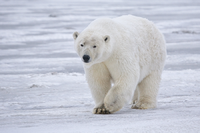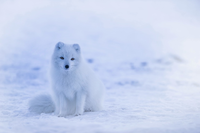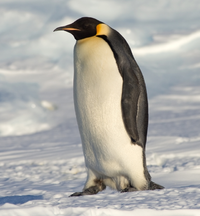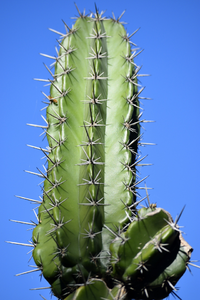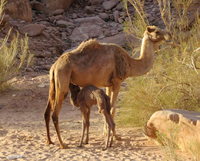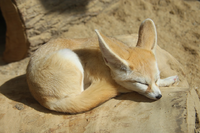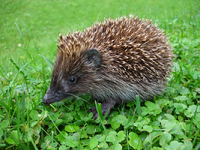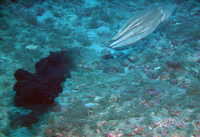Difference between revisions of "Adaptation"
| Line 12: | Line 12: | ||
: '''Adaptations''' are caused by [[evolution]]. | : '''Adaptations''' are caused by [[evolution]]. | ||
| − | |||
===Adaptations for the Arctic and Antarctic=== | ===Adaptations for the Arctic and Antarctic=== | ||
{| class="wikitable" | {| class="wikitable" | ||
| Line 20: | Line 19: | ||
|[[File:Penguin.png|center|200px]] | |[[File:Penguin.png|center|200px]] | ||
|- | |- | ||
| − | | style="height:20px; width:200px; text-align:center;" |The polar bear is adapted because it has thick fur to stay warm and it has white fur to camouflage in the snow. | + | | style="height:20px; width:200px; text-align:center;" |The polar bear is '''adapted''' because it has thick fur to stay warm and it has white fur to camouflage in the snow. |
| − | | style="height:20px; width:200px; text-align:center;" |The arctic fox is well adapted to the arctic with thick fluffy white fur. | + | | style="height:20px; width:200px; text-align:center;" |The arctic fox is well '''adapted''' to the arctic with thick fluffy white fur. |
| − | | style="height:20px; width:200px; text-align:center;" |An adaptation of penguins is thick fluffy feathers to keep warm. Penguins do not need to be camouflaged with white feathers because there are few predators to hunt them. | + | | style="height:20px; width:200px; text-align:center;" |An '''adaptation''' of penguins is thick fluffy feathers to keep warm. Penguins do not need to be camouflaged with white feathers because there are few predators to hunt them. |
|} | |} | ||
Revision as of 18:19, 29 August 2018
Contents
Key Stage 2
Meaning
An adaptation is a special part a living creature has that helps it survive. Sometimes an adaptation is the shape or size of certain parts of the creature.
About Adaptations
Adaptations for the Arctic and Antarctic
| The polar bear is adapted because it has thick fur to stay warm and it has white fur to camouflage in the snow. | The arctic fox is well adapted to the arctic with thick fluffy white fur. | An adaptation of penguins is thick fluffy feathers to keep warm. Penguins do not need to be camouflaged with white feathers because there are few predators to hunt them. |
Adaptations for deserts
| The cactus has evolved the adaptation of not having any leaves. This stops them from losing water too quickly in the dry desert. | An adaptation of camels for the desert is the hump on their back which stores food because there is not much to eat in the desert. | The desert fox has been adapted to have very large ears to help them cool down when it is hot. |
Adaptations for defence
| Hedgehogs have spikes. This adaptation make it difficult for animals to eat them. | Cactus plants have spikes. This adaptation make it difficult for animals to eat them. | Octopuses and squid spray ink when they are being attacked. This adaptation makes it difficult for the predator to see them when the swim away. |
